We explore the neurological basis of boundless optimism in this Naked Scientists NewsFlash, so fill your glasses to the top! We'll also hear how Earth got its water, how a bacteria-busting chemical keeps injured arteries open, and get a run down of this year's Nobel prizes!
In this episode
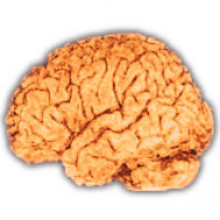
00:25 - Always Look on the Bright Side of Life
Always Look on the Bright Side of Life
This weekend may have brought disappointing news for English rugby fans - although well done to the Welsh - but there's always next time. Or maybe we'll win the football. For non-sports fans, this kind of optimism in the face of persistent failure seems crazy. But have you ever wondered why some people continue to look on the bright side of life - whether it's about sport or more serious life events - when it seems to an outsider that the odds are stacked against them?
To see if they can explain what's going on, Dr Tali Sharot and her team at University College London have done an interesting experiment in brain scanning, which they've published in this week's Nature Neuroscience.
The scientists persuaded 19 volunteers to lie in a machine known as an fMRI scanner (short for functional magnetic resonance imaging), which measures activity levels in different parts of the brain. Then they asked each participant to estimate the chances of 80 different unfortunate events befalling them - such as having their car stolen, or developing a serious disease like Alzheimer's. After each guess, the scientists told the person the average probability of that event happening to them.
Once each volunteer had been through the scanner, the researchers asked them to to fill in a questionnaire designed to test their levels of optimism, and have another go at estimating their chances of each event happening to them. And that's when they noticed something interesting.
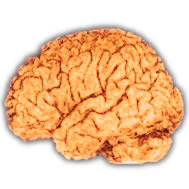 It seems that the volunteers did shift their estimates of the chances of something bad happening, but only if it turned out that they had previously thought their chances were higher. So if they had thought they had a 40 per cent chance of something bad happening, and were told the risk was only 20 per cent, then they would adjust their estimate downwards. But if they thought they had a low chance of something happening, and were told the average risk was higher, they tended to ignore the data and make a smaller adjustment to their guess.
It seems that the volunteers did shift their estimates of the chances of something bad happening, but only if it turned out that they had previously thought their chances were higher. So if they had thought they had a 40 per cent chance of something bad happening, and were told the risk was only 20 per cent, then they would adjust their estimate downwards. But if they thought they had a low chance of something happening, and were told the average risk was higher, they tended to ignore the data and make a smaller adjustment to their guess.
The clue to what's going on here came from the brain scans. The scientists found increased activity in the frontal lobes of the brain if the chances of a bad thing happening turned out to be lower than expected - suggesting that the person was in some way recalibrating their beliefs. But if the chances of something bad happening was actually higher than the person thought, the scientists noticed much less brain activity. And the more optimistic a person was, according to the questionnaire, the less brain activity they saw, suggesting that the person was disregarding the information and not processing it.
It's important to point out that this study only involved 19 people, so it's pretty small. And fMRI imaging studies can be notoriously difficult to interpret. But it certainly helps to shed some light on how someone's character - whether they're an optimist or a pessimist - influences how they make decisions.
On a simple level, this research helps to explain why England fans cling to our belief that we really could win every tournament we enter, whether it's rugby, football, tennis or anything else. But on a more serious note, looking on the bright side of life can be very important as a way of dealing with challenging life events, such as major illness, divorce, or being a victim of crime. But in other ways, it can be quite damaging. Mistakenly believing that your chances of a specific event happening to you are much lower than they actually are can influence behaviour - such as quitting smoking, practising safe sex or even saving for your retirement.
And financial experts are known to underestimate risks and be overly optimistic about potential profits - so maybe the subconscious reluctance of the financial world to accept the real risks of certain investments may have unwittingly led to the current financial crisis.
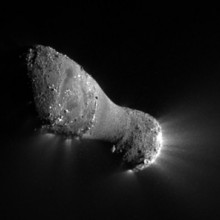
04:41 - Where Earth got its water
Where Earth got its water
A comet not far from Earth has shed some light on how our planet could have 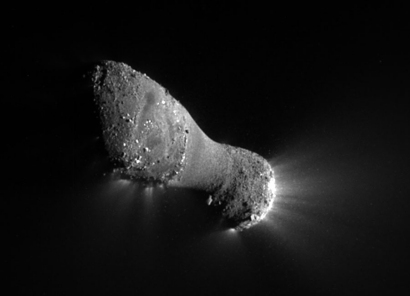 come by much of its water, a new study has revealed.
come by much of its water, a new study has revealed.
Writing in Nature, Paul Hartogh, who is based at Germany's Max Planck Institute for Solar System Research, used ESA's orbiting Hershel Space Observatory to study a small 1.5 kilometre-wide comet called 103P/Hartley 2, which formed originally out in the Kuiper Belt beyond the orbit of Pluto and now follows a 6.5 year elliptical orbit in the region of space between the Earth and Jupiter.
Hartogh and his colleagues probed the comet's "coma" - the pall of dust and debris thrown off by the body as it is warmed by the Sun - for the telltale-traces of water. Specifically, they were looking at the relative proportions of "heavy" hydrogen - or deuterium - that were present.
Water on Earth contains about one atom of deuterium for every 6500 atoms of "light" hydrogen. This a close match for the levels seen in asteroids and many meteorites but about half as large as the levels seen in other comets that have been measured far out in deep space in a region called the Oort cloud.
Consequently, space scientists had concluded that when the Earth first formed it was a hot, dry and barren rock that, as it cooled sufficiently for liquids to condense, was progressively wetted by the arrival of water-laden asteroids. Comets, they thought, must have been a relatively rare contributor to the planet's early water supply.
However, the observations from 103P/Hartley turn this idea on its head. The comet shows a deuterium-hydrogen fingerprint that is almost exactly the same as Earth's own water. It also reveals some interesting details about the birthplaces of the comets themselves and therefore the structure of the early solar system.
Comets like 103P/Hartley are thought to have formed in the Kuiper Belt, about 50 times further from the Sun than Earth is, and then migrated inwards later. Conversely, more distant comets like those now in the Oort Cloud and over 5000 times the Earth-Sun distance away, are thought originally to have been born near Jupiter before being gravitationally booted into the outer reaches of the solar system later.
But because these Oort Cloud comets formed closer to the Sun originally, and therefore would have been exposed to higher temperatures, they should have a lower deuterium-hydrogen ratio than their Kuiper Belt counterparts that formed under cooler conditions.
Instead the scientists have found the opposite. This argues that something is out of kilter in our understanding of the formation of the early Solar system, but it will take further cometary chemical forensics, like that announced by Hartogh, to ultimately reveal the answer...
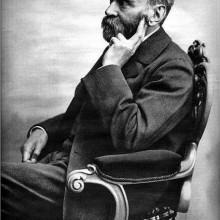
07:51 - The Nobel Prizes 2011
The Nobel Prizes 2011
Victoria Gill, BBC Science Correspondent
This week has seen the announcment of the 2011 Nobel Prizes, so we invited BBC science correspondent Victoria Gill to walk us through who got what, where and when, and why...
Victoria - Let's do it in the order that they were announced. It's always a fun week on the science desk when the Nobel Prizes are announced because we actually get to cover a breaking story rather than perusing all the literature and then trying to pitch science stories to all the editors. They want stuff from us so it's really exciting!
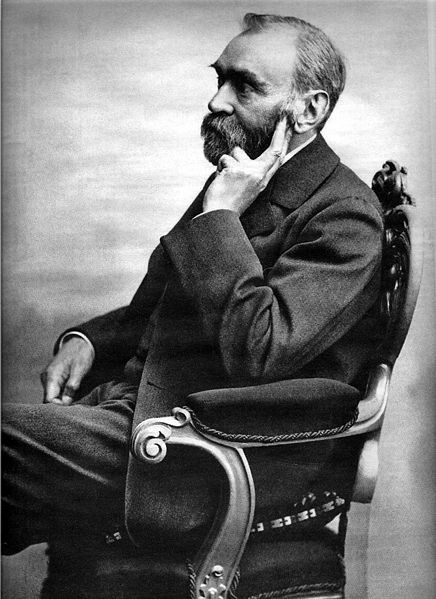 The first one, the Nobel Prize of Physiology and Medicine was shared between three researchers. Half of the (almost) million-pound prize went to Bruce Beutler and Jules Hoffman, and this whole Prize was to do with the immune system. So, what Bruce Beutler and Jules Hoffman did was figure out the gene that's responsible for your innate immune system, and that just means the gene that gets switched on so that your immune system figures out that there's a nasty microorganism, something foreign in your body, and tries to get rid of it. But there's another part in your immune system that's really important, your adaptive immune system, which you kind of might be more familiar with from being vaccinated. Kids get jabs to trigger antibodies and that's how your body adapts to be able to retain a memory of something nasty that caused an infection before, so it can get rid of it. Ralph Steinman discovered the gatekeepers to the adaptive immune system because, obviously, you don't want your body turning on some organism or cell that's already in your body that's doing no harm at all. You want it to be recognising foreign stuff that's going to cause a problem. These are called dendritic cells, and they can switch on your T-cells which are part of your adaptive immune system and create that memory. So, really remarkable stuff!
The first one, the Nobel Prize of Physiology and Medicine was shared between three researchers. Half of the (almost) million-pound prize went to Bruce Beutler and Jules Hoffman, and this whole Prize was to do with the immune system. So, what Bruce Beutler and Jules Hoffman did was figure out the gene that's responsible for your innate immune system, and that just means the gene that gets switched on so that your immune system figures out that there's a nasty microorganism, something foreign in your body, and tries to get rid of it. But there's another part in your immune system that's really important, your adaptive immune system, which you kind of might be more familiar with from being vaccinated. Kids get jabs to trigger antibodies and that's how your body adapts to be able to retain a memory of something nasty that caused an infection before, so it can get rid of it. Ralph Steinman discovered the gatekeepers to the adaptive immune system because, obviously, you don't want your body turning on some organism or cell that's already in your body that's doing no harm at all. You want it to be recognising foreign stuff that's going to cause a problem. These are called dendritic cells, and they can switch on your T-cells which are part of your adaptive immune system and create that memory. So, really remarkable stuff!
Chris - There was a controversy that raged around Ralph Steinman, wasn't there?
Victoria - There was indeed. Tragically, he died three days before the award was announced and the Nobel committee hadn't realised. There is actually a strict rule that a person who is deceased will not be considered for the Prize but they didn't know and he's been allowed to - it's a bit of a historic moment - to keep that Prize posthumously, so I think that's very fitting.
Chris - Didn't he also experiment on himself?
Victoria - Yes, he did. He died of pancreatic cancer and there's an amazing story on the BBC website about how he took research to a whole new personal level because he was actually testing pieces of his own cancer to see if he could raise an immune response to them, so really remarkable stuff.
Chris - Okay, well let's go from Earth out into space because the Physics Prize went to a clutch of scientists who were looking at the expanding universe, and we've actually interviewed a couple of them on the Naked Scientists.
Victoria - Yes, indeed. A remarkable bunch of guys and in really, really keen competition which is I think is why they managed to turn the tables on what we believed about what the universe is doing so quickly. Saul Perlmutter, Brian Schmidt, and Adam Riess shared the Nobel Prize for Physics for figuring out that the universe's expansion is not slowing down, it's actually speeding up. The interesting postscript of that is that there must be some force counteracting gravity to allow that to happen. So, it seems like a huge amount of our universe is made up by this mysterious force called Dark Energy. There's an amazing comment from the Nobel committee that said, "Now we know this, everything is possible" which I just think is a wonderful statement about just how little we know about the universe and how much more there is to find out and they've sort of opened that door.
Chris - Well let's go to chemistry because that's the 3rd Prize, isn't it? So what was given away for chemistry and to whom and for what?
Victoria - It is indeed. Dan Shechtman from the Israel Institute of Technology won the Nobel Prize for Chemistry for discovering quasicrystals and my reaction to this was, "What on Earth is a quasicrystal!?" I'm ashamed to say that as a former Chemistry World reporter, but I've been doing some reading around it and it's a really remarkable story. He basically discovered this when he looked at a very rapidly cooled metal alloy to see what the structure was. Now this shouldn't have been a crystalline structure at all; very, very rapidly cooling a liquid should just throw all of those atoms into disorder. But it was a crystal, which is not too unusual - lots of crystals form in nature, but it was very, very weird. It had this 10-fold symmetry. What he was seeing was concentric circles of 10 points, and what that meant was you couldn't really create a crystal out of what he was looking at. He actually said, "Such a creature cannot exist" because if you imagine, it'd be like trying to make spherical football out of just 6 pointed polygons. It just doesn't work. It doesn't fit together and it's taken mathematicians and even artists to figure out what these quasicrystals are and that they can form. So he really turned everything around in terms of what we thought of how matter can be structured, and he was thrown out of his research institute for that. So a really brave guy, kind of standing up for his research.
Chris - Has he got his job back?
Victoria - He's got a new job now and a Nobel Prize, so I think he'll be laughing now!
Chris - So the good guys won in the end?
Victoria - Indeed.
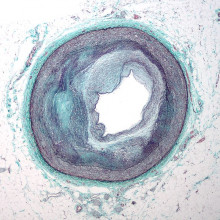
12:45 - Antimicrobial chemical keeps injured arteries open
Antimicrobial chemical keeps injured arteries open
Researchers have discovered a chemical signal secreted by blood cells that 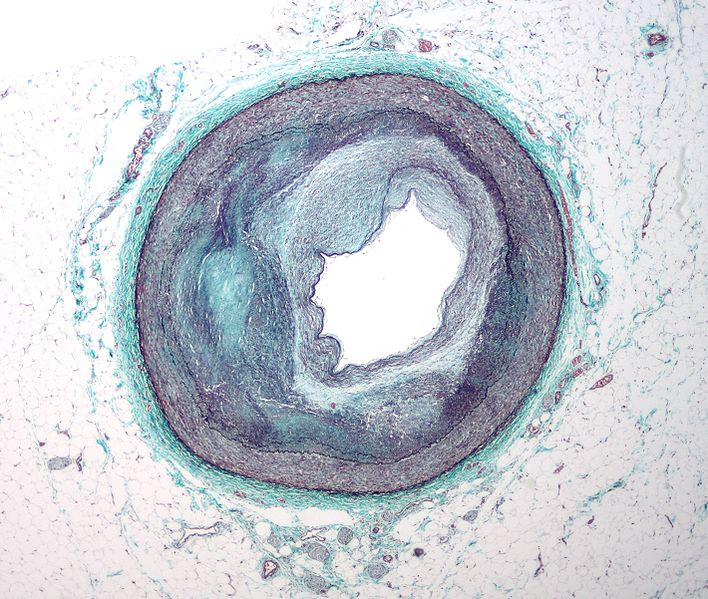 prevents arteries from furring up again following injury or angioplasty.
prevents arteries from furring up again following injury or angioplasty.
Called cathelicidin, the substance, which also has antimicrobial properties, is secreted by white blood cells called neutrophils that flock to sites of tissue injury and inflammation.
In tests on mice, University of Munich researcher Christian Weber and his colleagues found that removal of the neutrophils from circulation following an arterial injury caused vessels to become blocked by an overgrowth of tissue called neointimal material, the growth of which was triggered by the damage.
But when neutrophils were present, the researchers found, the cells clung to the injured parts of the artery and deposited cathelicidin locally. This then recruited a separate population of blood vessel-rebuilding cells called early outgrowth cells. These proliferated and secreted repair factors, reassembling the endothelial lining that paves and seals the inside surfaces of arteries. Re-establishing the endothelium in this way appears to prevent the potentially lethal neointimal overgrowth.
This means the discovery could also have 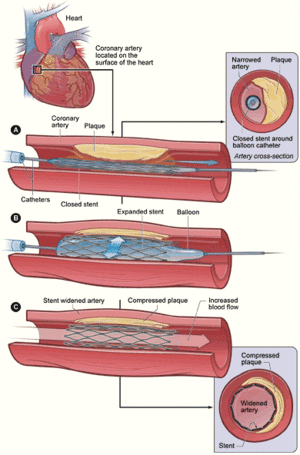 implications for the process of angioplasty in which doctors use a tiny balloon to open up blocked blood vessels. Usually during this procedure a small metal cage called a stent is inserted to hold open the artery afterwards. But this can trigger inflammation, leading to neointimal overgrowth and re-stenosis, or blockage, of the artery.
implications for the process of angioplasty in which doctors use a tiny balloon to open up blocked blood vessels. Usually during this procedure a small metal cage called a stent is inserted to hold open the artery afterwards. But this can trigger inflammation, leading to neointimal overgrowth and re-stenosis, or blockage, of the artery.
To get around this problem, the latest generations of stents are impregnated with anti-proliferative drugs designed to block the growth of the neointimal tissue. But whilst they are very effective in this role, ironically 30% of patients who receive these so-called "drug-eluting stents" develop complications including the formation of blood clots inside the vessel. Doctors think this occurs because the drugs don't only block the growth of the neointimal tissue but also prevent the smooth endothelial lining being re-established. So a cathelicidin-secreting stent might be able to overcome these difficulties.
With this in mind, the team, who have presented the work in Science Translational Medicine, engineered a cathelicidin-impregnated stent that was inserted into the carotid arteries of a group of experimental mice. A second group of control animals received stents that lacked cathelicidin but were otherwise identical.
When the arteries from the two groups of animals were compared 4 weeks later, the arteries of the cathelidicin-stented mice showed significantly less narrowing.
According to the team, "although it remains to be seen whether this effect will be reproduced in humans, cathelicidin may prevent stents from causing the very problem they are supposed to treat and thus improve therapy for severe atherosclerosis."
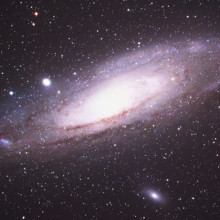
16:08 - The ALMA Telescope, Solar Orbiter, Autistic Mice and Chivalrous Crickets.
The ALMA Telescope, Solar Orbiter, Autistic Mice and Chivalrous Crickets.
Antonio Hales, ALMA; Matt Anderson, Harvard Medical School; Fabio Favata, European Space Agency; Migeul Nicolelis, Duke University; Rolando Rodriguez-Munoz, Exeter University
ALMA opens up to the Universe
Understanding the origins of the Universe is now within our grasp thanks to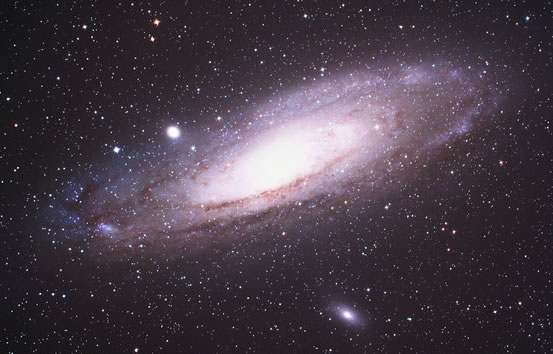 a new
a new
radio telescope turned on this in Chile.
The Atacama Large Millimetre array, or ALMA, located high up in the Atacama desert of the Chilean Andes, is the largest, most expensive ground-based telescope ever built. With an array of 66 giant antennae, it will enable scientists to probe deep Space using wavelengths of light never observed before, to explore the early universe as ALMA's Antonio Hales explains...
"Between the radio and far infrared frequencies, lies the millimetre and submillimetre range which is where ALMA will operate. It carries information on the cold universe - cold clouds of dust and gas in which galaxies form. So ALMA will provide observations of those very first galaxies, how did they form? How the stars in those galaxies form? And how did those galaxies and those stars evolve in order to form the universe we see today?"
Autistic Mice
Scientists have created
micewith the rodent equivalent of the human condition Autism.
By adding to experimental animals, extra copies of a gene called Ube3a, which has previously been linked to Autism in humans, Harvard Medical School scientist Matt Anderson and his colleagues have been able to produce mice showing similar communication and behavioural problems to those seen in Autistic patients...
"The mice show no social interaction, have reduced speech or communication and they have increased repetitive behaviours. There's really very little used right now to improve communication and social interaction. Most of the therapies are directed towards the associated symptoms like anxiety, sleep disturbances, epilepsy. I think that this tool is going to be a great way to try to find things that will treat those core symptoms."
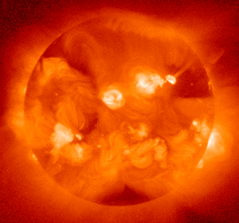 Journey to the Sun
Journey to the Sun
The European space agency has this week agreed to lead the biggest project yet to study the behaviour of our Sun.
The 7 year
Solar Orbiter mission, due to launch in 2017, will involve the construction of a shielded probe that will orbit at 42 million kilometres from the Sun, a distance closer than any spacecraft to date and nearer even than the orbit of Mercury. Exposed to temperatures of up to 5000 degrees Celsius, the probe will provide unprecedented insight into the workings of our nearest star and how it affects the Earth. Fabio Favata from the European Space Agency...
"By doing this, we'll observe the origin or phenomena such as the coronal mass ejections or even the simple solar wind, especially more and more in an era in which we're relying more and more on high technological equipment. We're relying on satellite communication and satellite navigation and so forth. So in addition to probing some very elemental scientific questions, it will also help us to understand the influence of those mechanisms on Earth and therefore, cater for them, prevent damage and so forth."
Virtual Monkey Movements
Monkeys have been trained to
control a virtual arm on a computer using activity recorded from their brains.
The device created by Duke University's Miguel Nicolelis allowed the monkeys to move and feel objects in a virtual world controlled purely by their thoughts. Electrical signals were also sent back to their brains to distinguish the textures of the objects they were touching. The team hope to develop the technology to help paralysed patients...
"Basically, what we have done is to create the first brain-machine-brain interface that allows both electrical signals from the brain to control the movements of artificial devices and also to provide tactile feedback from these devices directly to the brain without interference from the body of the subject. This has the aim of creating a new generation of neuroprosthetic devices. A whole body robotic vest and exoskeleton that will be used to restore mobility in severely paralysed patients."
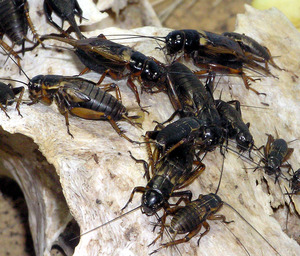 Chivalrous Crickets
Chivalrous Crickets
And finally, it seems chivalry isn't dead after all. Well in crickets that is.
Studying field crickets in the wild, Rolando Rodrigez-Munoz found that when mated pairs of crickets entered their burrows, males allowed their female partners to seek sanctuary first whilst they waited outside, increasing their own risk of predation and putting their own lives at risk. But as a reward, these males got to mate with the female more frequently, resulting in more offspring inheriting their genes...
"Most people are thinking that this behaviour would be more likely to happen in humans or closely related mammals, but we can see that even small insects can be seen being chivalrous with females. So it's good for both. Males get more offspring and females reduce their risk of being predated."
The findings counter previous theories that males guard in this way to stop other males mating with the females. The males are effectively trading a long life for one with greater reproductive success.









Comments
Add a comment